Overview of BMW X5 45e
BMW X5 Xdrive 45e created some excitement when they been initially offered on the market back in 2019. As a replacement to outgoing 40e model, 45e was a major redesign and improvement over all departments. From chassis, to engine, battery and infotainment. Since then, they exploded in popularity, with BMW still playing catch up with demand, likely all the way in to 2023. Currently sold with small premium over X5 40i.
Our example BMW X5 45e was build and purchased in 2022. Since then we clocked well over 30,000 miles, mostly city use with some highway duty.
Over those miles we could not stop wondering what is happening to ICE engine temperature while car been driven in “battery” or Electric only mode. So we decided to check.
The question
When you jump in to the 45e, and decide to drive it in Hybrid or Electric mode, you can comfortably cruse around the town without ICE motor ever coming to life for over 50 miles. However, at some point, occasionally you will call on ICE engine. Usually for additional performance rather than depleted battery. In this case, ICE come to life with PRM rapidly climbing to redline. All then on cold, not pre-conditioned engine. While the BMW B58 turbo 6 engines are known to be reliable, this kind of working environment is certainty new. Usually, ICE have at least few minutes to warm-up before meeting it’s redline close to 7000 RPM.
The question keep on lingering: Does X5 45e precondition the engine in any way to reduce the amount of stress it is subject to? With no clear answers by BMW and internet, we decided to test.
The BMW technical documentation shine some light on separate modules at work. Below is a schematics of the transmission and it’s cooling. The electrical machine (motor) incorporated inside transmission housing and cooled by transmission oil. It’s thermostat based system, cooling radiator only comes in to the picture when oil temperature is over maximum threshold. In our test, transmission reached 50c with thermostat still closed.
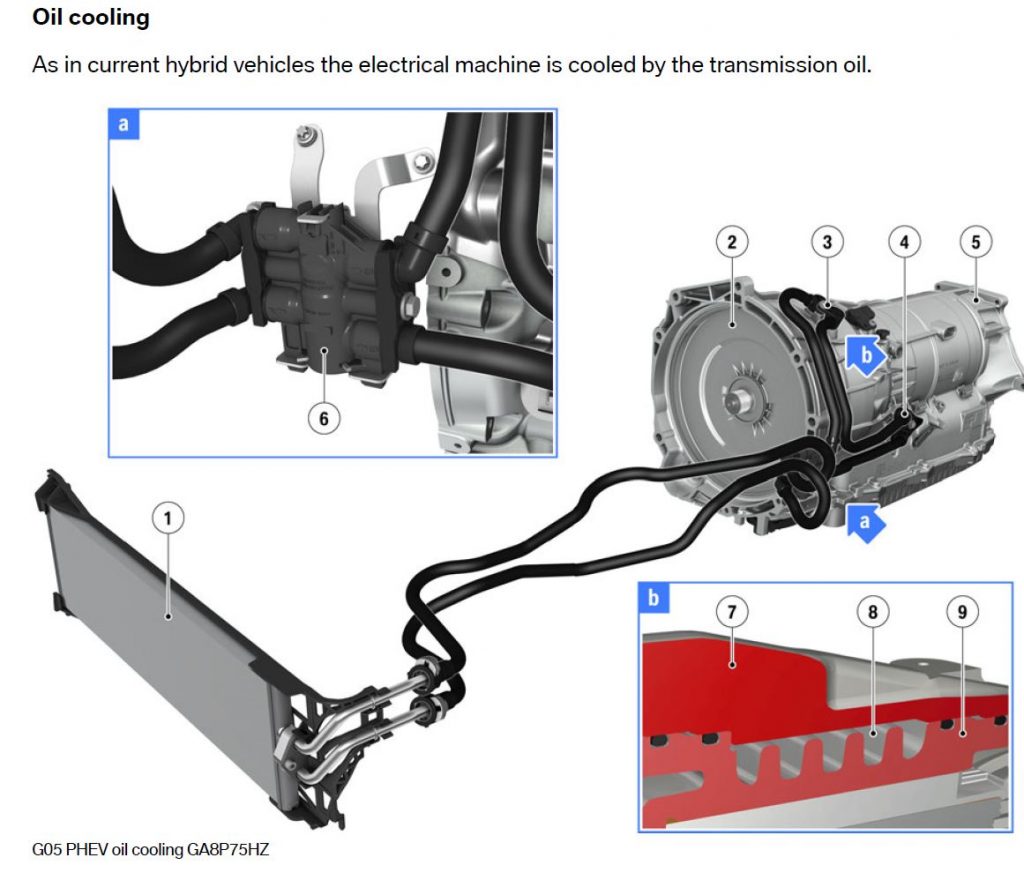
Next one is air-conditioning (cooling) system. This one will challenge average home mechanic, as it is major deviation from how it’s been done on cars for last 60 years. And it’s closer to Tesla design than to old fashion ICE car.
In a nutshell, condenser now cooled by separate external coolant circuit. Vehicle saloon and battery cooled by air-conditioning refrigerant directly.
Axillary coolant circuit
Take time to digest schematics below. This is not ICE coolant circuit. This is completely separate low temperature coolant circuit dedication to thermal management of air-conditioning condenser, electric machine driver electronics, battery charging power module and ICE intercooler build in to the intake manifold.
System have own pump, radiator, intercooler and plate heat-exchanger.
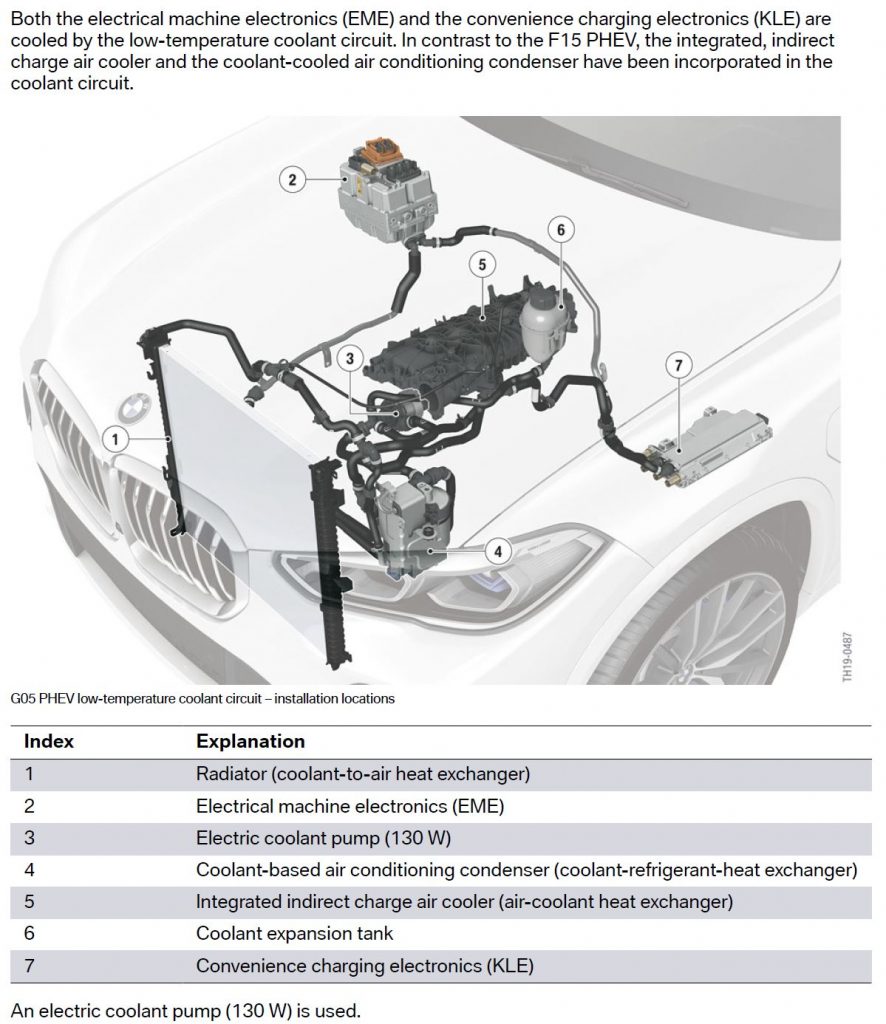
FLIR ONE 2015 model
With all the above, it is clear that BMW done some fine engineering to manage added systems and complexity. There is a lot going on here, but it is still unclear from the documentation how it all influence ICE thermal management and what is missing in the technical documents if any.
Challenge:
- Work out heat flow in the X5 45e in electric only mode
- Identify how it influence ICE and it’s operation
- Test equipment : Flir ONE PRO
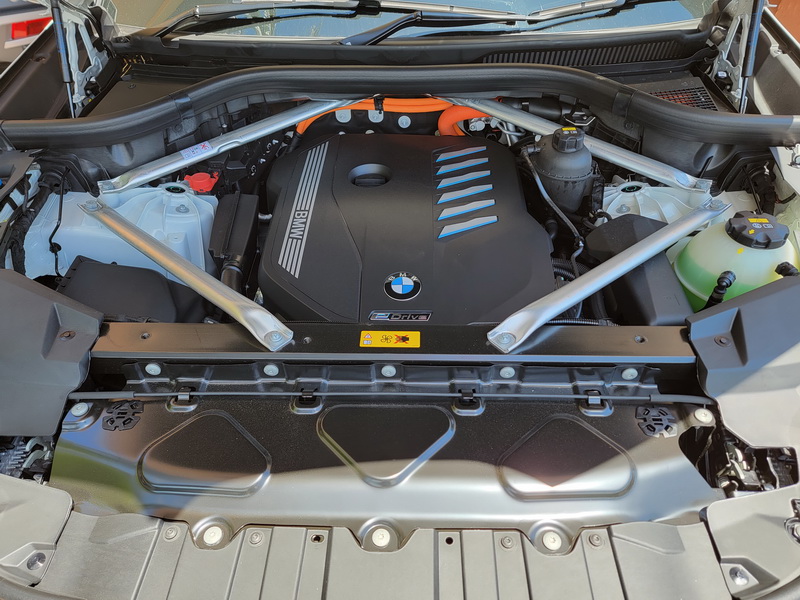
BMX X5 45e engine 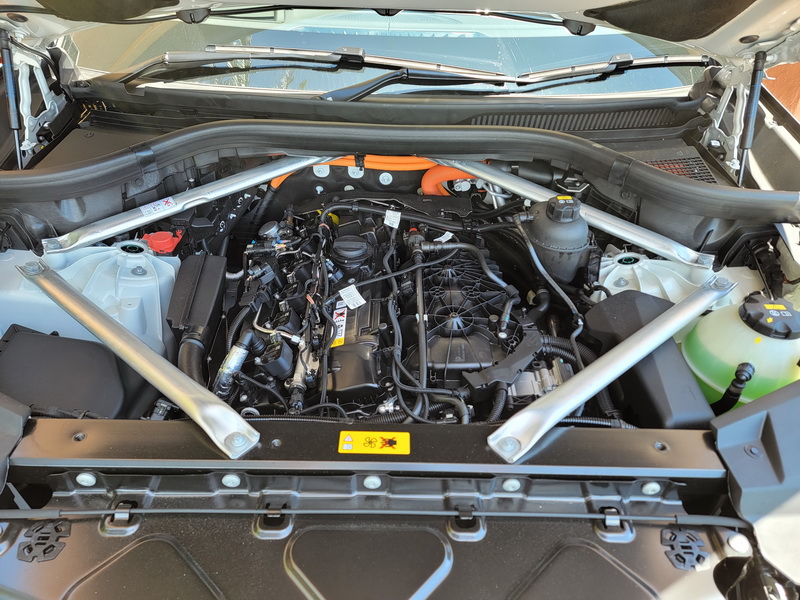
Engine cover off
We start with taking off noise suppression cover. This will allow us measure engine head temperature directly.
With battery charged and air-conditioning runing we take initial base thermal readings. Ambient air is 29c. Pre-conditioning is ON for 10 minutes.
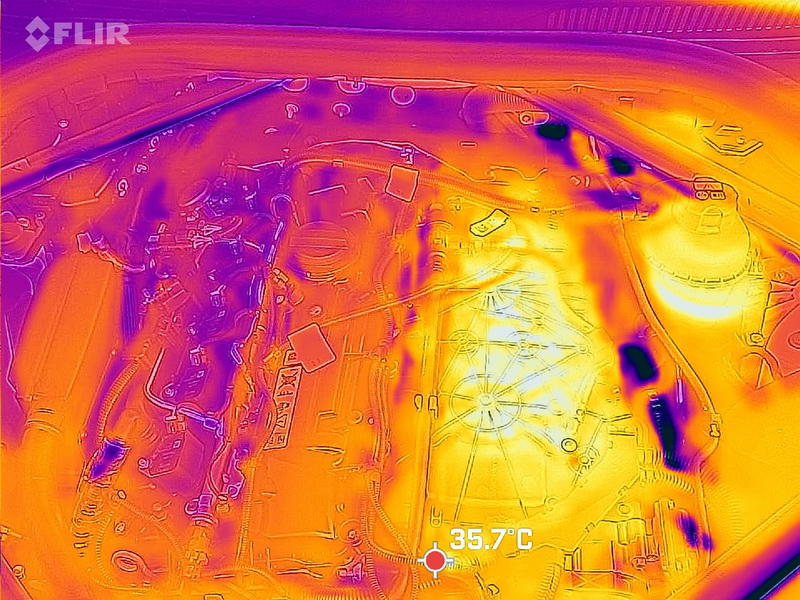
Preconditioning is ON, not driven 
Front radiator at work
After the Electric Only run
With battery fully charged and car preconditioned, we took X5 45e on the 15km drive across some minor hills and traffic. Nothing unusual, just a normal run around suburbs.
Then we pop the bonnet and took some more readings of the engine.

X5 Xdrive 45e ICE after EV only run.
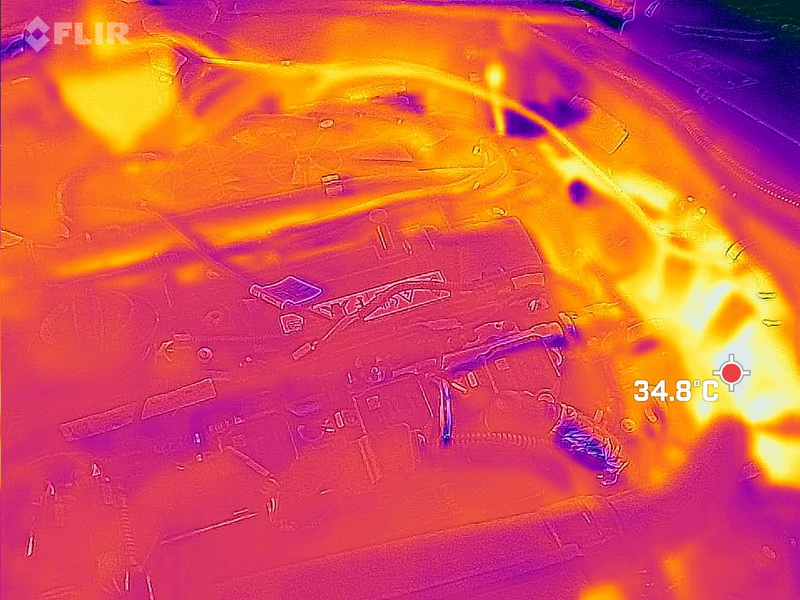
Another angle, show 34.8C secondary colling circuit radiators
Results
Fact: 15 minutes run in EV mode will raise temperature of ICE motor by about 3.0C
There are more than meets an eye.
The reasons behind ICE warming up during EV only operation are many folds. First and obvious is that ICE sit in the path of warm air coming from radiators that cool electric motor, electronics and air-conditioning. Second is that automatic transmission and electric motor them self get fairly warm and they are bolted directly to the ICE. Here is the image of the automatic transmission temperature after the run.
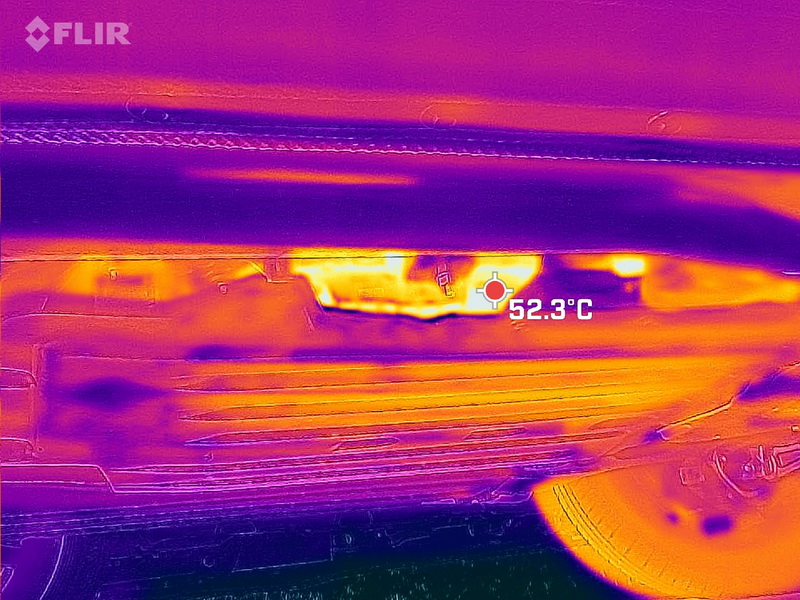
X5 45e automatic transmission temperature in EV only mode
Another interesting aspect is that ICE intercooler cooled by coolant circuit pre-heated by aircon and other systems. Meaning upon startup, ICE will be feed air with temperature above ambient. This will help rapid warm up procedure.
Notes
The discovered low temperature circuit coolant flow, that cool AC unit and Electronics and then circulated to ICE intercooler help us to understand BMW decision to de-tune B58 in 45e application. Been fed somewhat warmer intake air, this will result in decrease of performance.
The good news are that for performance tuning it creates easy and clear path for improvement. For example adding additional coolant radiator say in side went of the car and routing coolant thru it BEFORE it enters ICE intercooler build in to engine manifold, will significantly drop intake air temperatures and will improve overall thermal performance of the system. Resulting in more efficient air-conditioning and electronics cooling.
Conclusion of BMW X5 Xdrive 45e thermal performance
It is unclear why BMW engineers decided that it is a good idea not to focus on recycling system thermal energy for pre-heating ICE. We can see that it will add another layer of complexity, but the results will be measurable, with ICE is likely reaching mid 50’s Celsius after some 15-30 minutes drive. On the other hand, it is likely that ICE when called upon will be above ambient air temperature and was tested in this mode to survive well pass lifespan of the car. Considering now little work it does in day to day driving.
Would we jump in to 45e and rev it to red line? No. Would we floor it to call maximum performance after driving in EV mode? No. Would we do it in emergency? Yes.
With some mechanical sympathy we posses, X5 Xdrive 45e to be treated as any other ICE vehicle when driven with performance in mind.
BMW X5 45e thermal management system impressions:
| Pros | Cons |
| – Well separated thermal circuits | – Electric air heater for cabin |
| – Advanced thermal management | – De-tuned B58 performance |
| – Good aircon performance | – No ICE preconditioning |
| – To date limits not reached | – |
Some useful source links: Electrical transformer manufacturer in China that makes parts for electrical motors inverters for big brand Euro cars.
Flir One Pro, thermal camera we used, full review
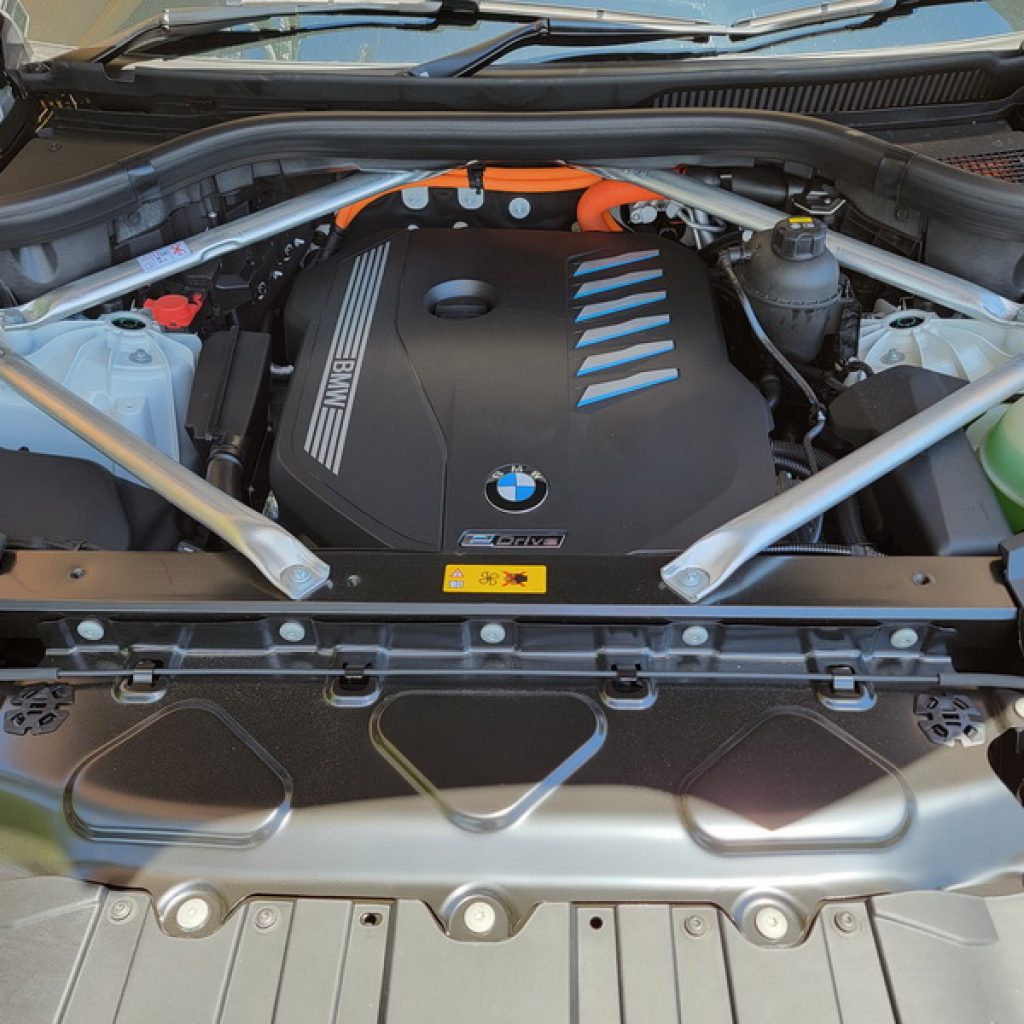
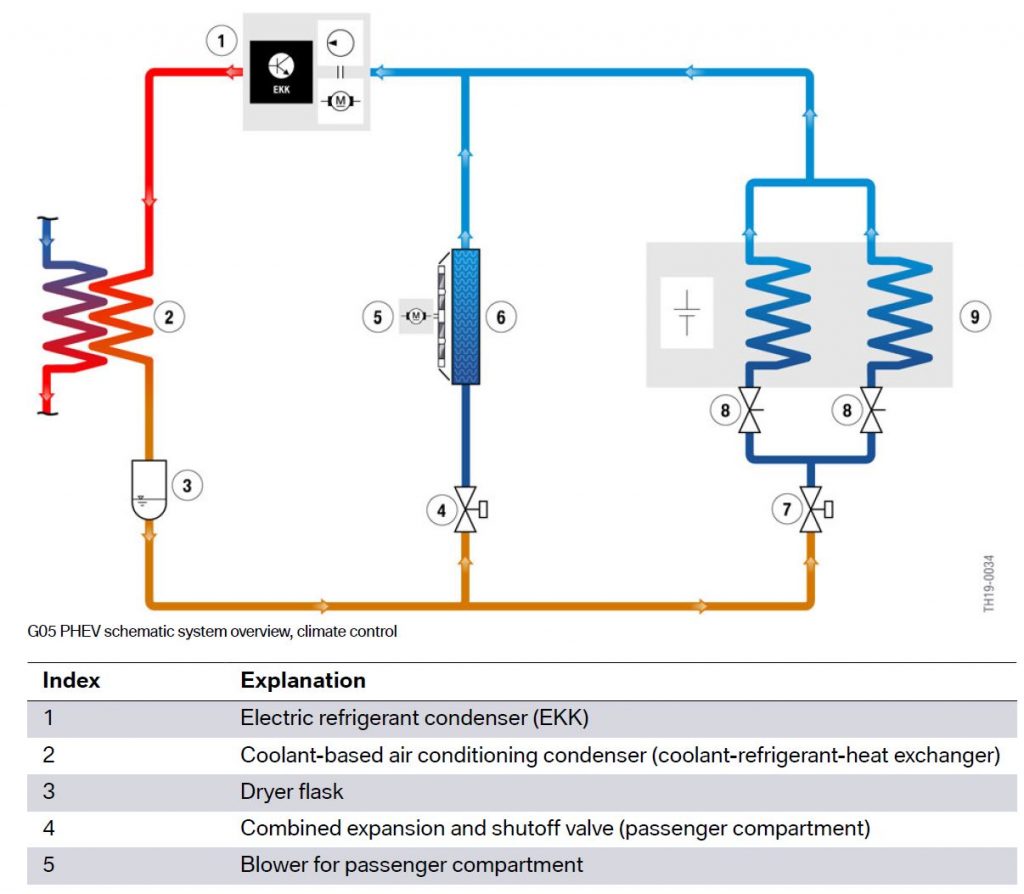
The BMW X5 45e is a hybrid version of the BMW X5 SUV, which combines a turbocharged 6-cylinder engine with an electric motor. The thermal management system in this vehicle is responsible for regulating the temperature of the engine and other components, such as the battery and transmission. This is done to ensure optimal performance and to prevent overheating, which can cause damage to the engine or other systems. The thermal management system include features such as a radiator, coolant and refrigerant system, and temperature sensors that monitor the temperature of various components and adjust the flow of coolant as needed. The onboard 3.7KW AC battery charger module uses high end power transformers with integrated cooling circuits made by http://www.patransformers.com/china_manufacturer/ei-transformers/ This module share cooling circuit with Intake charge intercooler (Water to Air).